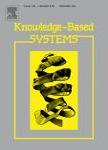版权所有:内蒙古大学图书馆 技术提供:维普资讯• 智图
内蒙古自治区呼和浩特市赛罕区大学西街235号 邮编: 010021

作者机构:Southwestern Univ Finance & Econ Sch Comp & Artificial Intelligence Chengdu Peoples R China Iowa State Univ Ames IA USA Beijing Inst Technol Beijing Peoples R China Univ Elect Sci & Technol China Sch Informat & Software Engn Chengdu Peoples R China
出 版 物:《KNOWLEDGE-BASED SYSTEMS》 (Knowl Based Syst)
年 卷 期:2025年第310卷
核心收录:
学科分类:08[工学] 0812[工学-计算机科学与技术(可授工学、理学学位)]
基 金:National Natural Science Foun-dation of China Sichuan Science and Technology Program [2023ZYD0145] Natural Sci-ence Foundation of Sichuan Province [2023NSFSC1411, 25QNJJ0627]
主 题:Anomalous trajectory discovery Open-world learning State space model Spatiotemporal data
摘 要:Identifying anomalous trajectories that deviate from usual driving patterns in an open-world context has recently become a critical and urgent task in location-aware systems. In contrast to the closed-world settings, its goal is to not only identify known but also detect the presence of unknown anomalous behaviors. Despite the achievements of recent self-motivated learning paradigms, existing solutions either do not have the ability to discover unknown anomalous behaviors or can only expose their presence. In this study, we first formally define our task as the Anomalous Trajectory Discovery problem in an Open-world scenario (ATDO), and introduce a novel fine-grained O pen-world S tate S pace L earning ( OSSL ) framework that has the ability to discover multiple unknown patterns in addition to classifying the existing known behavioral patterns of trajectories. Due to the inherent density behind massive trajectories, we are motivated by state space models and devise a Spatial- temporal State Space (S3) block to explore the long-term dependencies behind the lengthy trajectories. To enable open-world learning, we devise two adapters that operate interactively with three open-world objectives to discover multiple unknown patterns in addition to identifying existing behaviors. With the context setting of two progressive open-world tasks, the experimental results conducted on two large trajectory datasets demonstrate the superiority of OSSL for both known and unknown anomalous patterns.